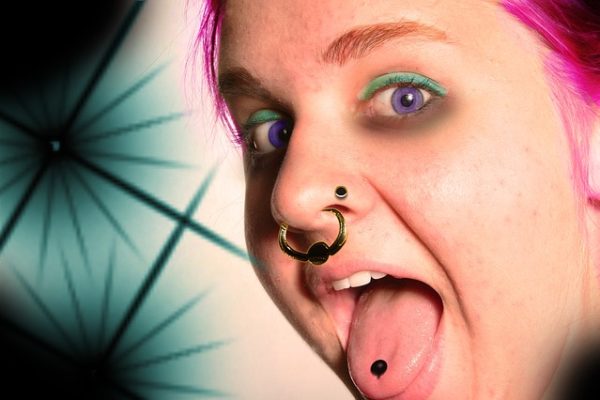Body piercings utilize the practice of puncturing or cutting a part of the body to create an opening in which jewelry may be worn. Piercings trace back to more than 5,000 years ago. In fact, we have come across mummified bodies wearing earrings.
Aside from the ears, other parts of the body are also subjects of this form of self-expression. Nose piercing saw its beginnings as early as 1,500 B.C. While they seem modern, nipple and genital piercings historically date back to Ancient Rome and Ancient India respectively.
“Body piercing has been around since ancient times, and isn’t going to go away,” says Pat McCarthy, the president of the Association of Professional Piercers in Columbus, Ohio in an interview with ABC News.
Among this type of body piercing, tongue piercing takes the fourth spot as the most popular piercing location for both men and women.
Yet, the rising popularity of tongue piercings is causing concerns among dental professionals for the risks it poses. Tongue piercings can cause excessive bleeding, swelling, chipping of the teeth, allergic reactions, and infections, among other symptoms.
Recent studies also found that gums inside the front of the mouth are more likely to recede with tongue piercings. This is due to the repeated pushing of the piercing against the front teeth. When gums recede, there is a potential for it to cause loose teeth and potentially result in tooth loss.
According to Dr. Sidney B. Eisig, some cases, although few, resulted in hospital admission and intravenous antibiotics for treatment of the complications.
Tongue piercings take a while to heal completely. Although healing may begin as early as five to seven days after the procedure, it usually takes two to four weeks for the jewelry to begin to fully heal.
For that reason, those with a new tongue piercing must wear longer jewelry to wear until the four weeks. It isn’t until the latter period that the wearer can begin to opt for shorter jewelry.
“Longer initial jewelry for safety must be shortened to avoid tooth or gum damage,” said the former president of the Association of Professional Piercers and medical liaison Brian Skellie.
Another month is necessary for the area to solidify and 90 days for a protective layer to form around the piercing. In the first two years, the area is will finally stabilize and become sturdier.
Having a tongue piercing can also affect your dental hygiene routine while healing.
Skellie advises that harsh, abrasive toothpaste needs to be avoided for a month while a protective layer around the piercing grows.
He also warns against the use of mouthwash containing alcohol which can irritate the healing tissue.
Aside from harsh toothpaste and alcohol-containing mouthwash, kissing and oral sex are unsanitary during tongue piercing healing. Exposure to bodily fluids may infect the area of the piercing.
Before considering a tongue piercing, make sure that you are physically fit to undergo the procedure. People with heart disease, diabetes, hemophilia, and autoimmune disease may suffer from slow healing post-piercing. Also, ensure your safety by getting yourself Hepatitis B and Tetanus vaccinations prior to the piercing.
The condition of the piercing shop must also be considered. Make sure that it is clean and well-run and that the piercer has the knowledge and licensing to perform piercings. Just as important, ensure the piercer uses a new needle when piercing your tongue to avoid cross-contamination or transmission of disease.
To avoid infection and inhibition of bacteria, practice good oral habits. Additionally, consult your dentist for further reminders on tongue piercing.

